Introduction
Dinosaurs, the ancient rulers of our planet, have captivated our imagination for centuries. Among these magnificent creatures, the carnivorous dinosaurs stand tall with their fearsome nature and colossal size.
In this article, we embark on a journey through time to discover the largest carnivorous dinosaur known to science – the awe-inspiring Spinosaurus. Prepare to be amazed as we uncover the fascinating story of this mighty predator that outshines even the legendary Tyrannosaurus rex.
Understanding Carnivorous Dinosaurs
Carnivorous dinosaurs, members of the theropod group, were a diverse and dominant lineage during the Mesozoic Era, which spanned over 180 million years. With their sharp teeth, powerful jaws, and swift agility, these apex predators ruled the land, preying on other dinosaurs and various creatures.
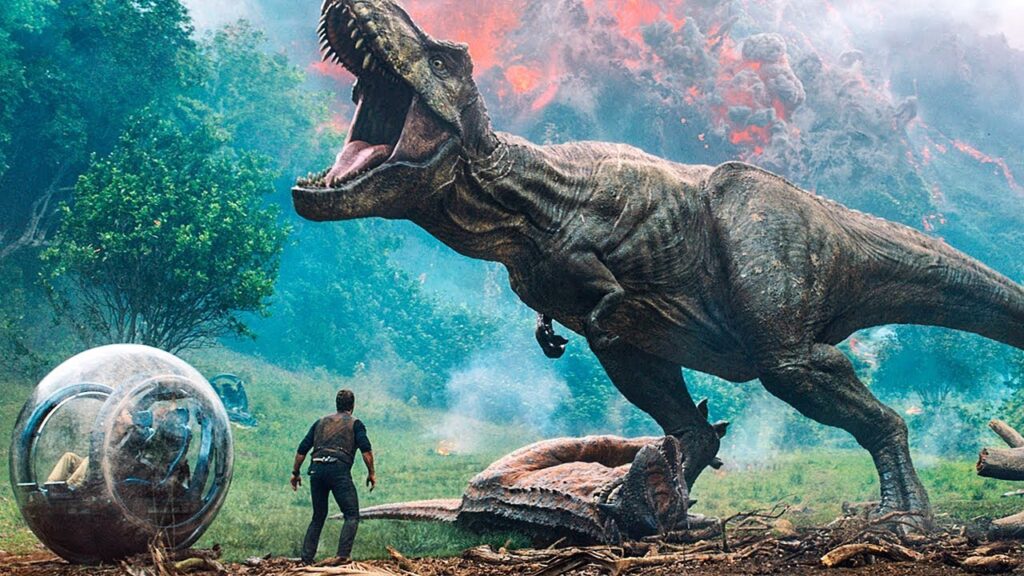
The classification of theropods encompasses a wide array of species, each displaying unique adaptations tailored to their specialized hunting techniques. Among the most famous theropods are the ferocious Velociraptor, the massive Allosaurus, and, of course, the iconic Tyrannosaurus rex.
Each of these predators held its place in the prehistoric ecosystem, carving out a niche as a fearsome hunter.
The Discovery of Spinosaurus
In 1912, an incredible discovery took place in the deserts of Egypt that would forever change our understanding of dinosaurs. German paleontologist Ernst Stromer unearthed fossils of a giant dinosaur, and he aptly named it Spinosaurus, which translates to “spine lizard.”
Spinosaurus quickly became a source of fascination for researchers, as its fossils presented intriguing and enigmatic features. Standing at an astonishing length of up to 50 feet or more, Spinosaurus was truly a colossal carnivore, dwarfing most of its contemporaries.
Spinosaurus: The Mighty Carnivore
What sets Spinosaurus apart from its carnivorous counterparts is its unique adaptation to both land and water. While many theropods were exclusively terrestrial, Spinosaurus showcased a range of adaptations that allowed it to thrive in aquatic environments as well.
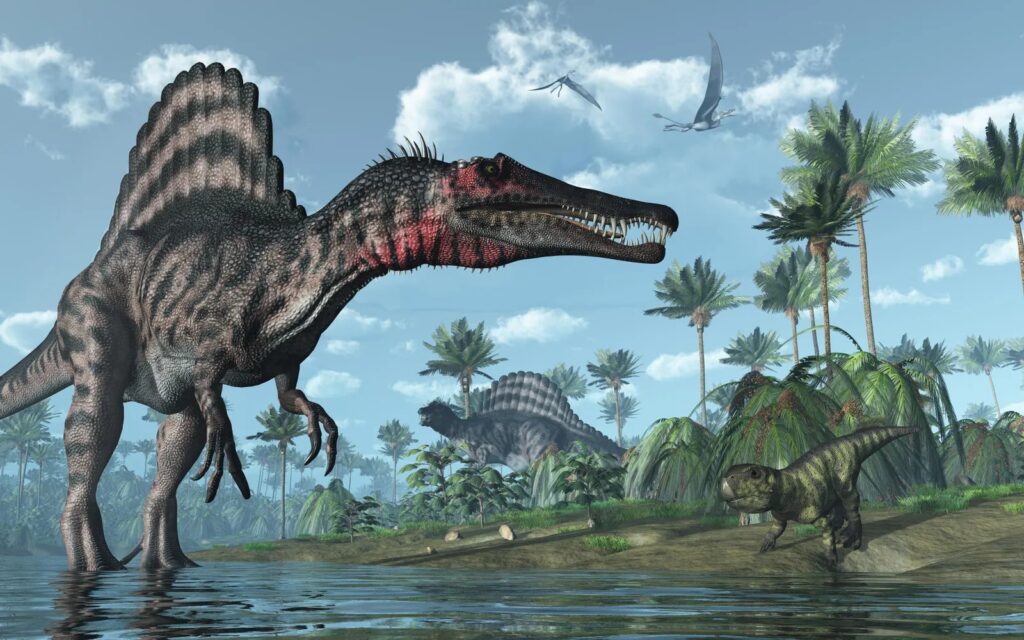
The hallmark feature of Spinosaurus is its imposing sail, composed of elongated spines that ran down its back. This sail-like structure was supported by a network of bony struts, creating a formidable sight that would strike fear into any creature that crossed its path.
While the purpose of the sail remains a subject of debate among scientists, it is widely speculated that the sail may have played a role in thermoregulation, display during courtship rituals, or even acted as a physical barrier for territorial disputes.
In addition to its sail, Spinosaurus boasted a long, narrow snout adorned with conical teeth. This snout was perfectly adapted for seizing slippery aquatic prey such as fish, making it a highly skilled piscivore.
With powerful limbs and sharp claws, Spinosaurus was equally adept at hunting on land, capable of ambushing unsuspecting dinosaurs or scavenging carcasses.
Top Contenders for The Largest Carnivorous Dinosaur
While Spinosaurus holds the title as the largest known carnivorous dinosaur, the prehistoric world was home to several other formidable contenders that vied for supremacy in the ancient ecosystem.
In this section, we explore some of the top contenders for the crown of the largest carnivorous dinosaur, each with its unique features and adaptations that allowed them to dominate their respective habitats.
Tyrannosaurus rex – The King of Dinosaurs
Arguably the most iconic dinosaur of all time, Tyrannosaurus rex, or T. rex, reigned supreme during the Late Cretaceous period. This colossal carnivore is widely regarded as the largest land predator to ever walk the Earth.
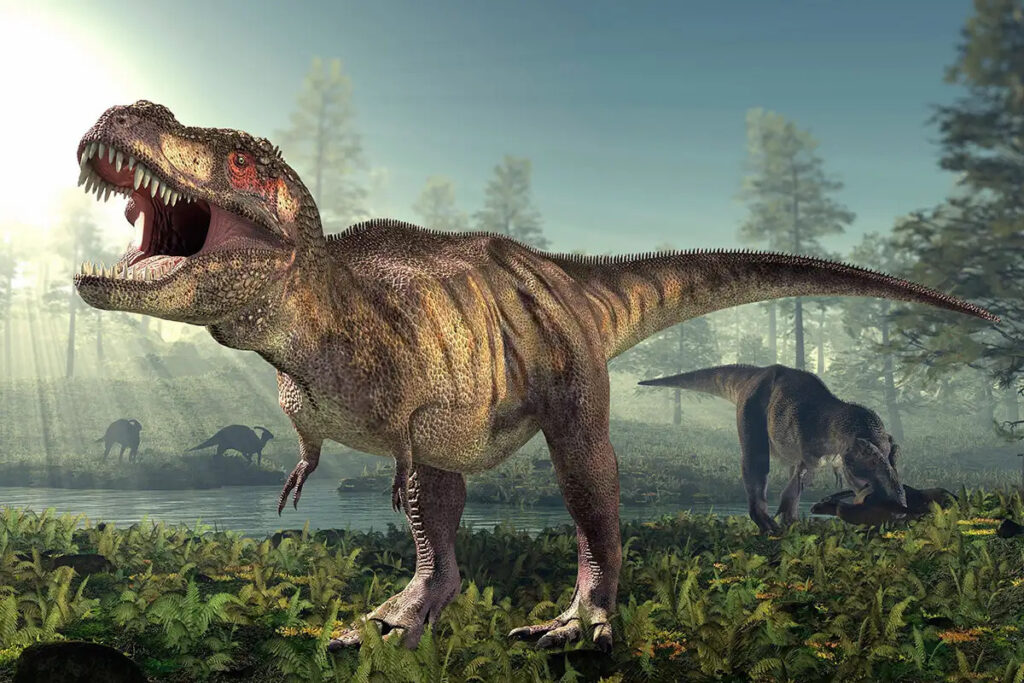
With its massive head, powerful jaws, and bone-crushing teeth, T. rex was a fearsome hunter capable of taking down massive herbivores like Triceratops and Edmontosaurus.
While not quite matching Spinosaurus in overall size, T. rex’s towering presence and legendary status make it one of the top contenders in the realm of carnivorous dinosaurs.
Carcharodontosaurus – The “Shark-Toothed” Predator
Carcharodontosaurus, a close relative of Spinosaurus, was another heavyweight contender in the carnivorous dinosaur arena. This massive predator roamed the Earth during the mid-Cretaceous period.

Named after the sharp, serrated teeth reminiscent of a shark, Carcharodontosaurus was a formidable predator with a length estimated at around 40 to 45 feet. Its powerful jaws allowed it to take on large prey, making it a dominant force in its African habitat.
Giganotosaurus – The Giant of South America
Hailing from South America, Giganotosaurus was another titanic carnivore that lived during the mid-Cretaceous period. It shares similarities with T. rex and Carcharodontosaurus but is believed to have surpassed them in length, with estimates ranging from 43 to 46 feet.

With its massive size and serrated teeth, Giganotosaurus was a top predator in the ancient landscapes of present-day Argentina, where it likely hunted massive herbivores like Argentinosaurus.
Carnotaurus – The “Meat-Eating” Bull
While not as large as some of the other contenders on this list, Carnotaurus earns its spot with its unique appearance and adaptations. This carnivorous dinosaur inhabited South America during the Late Cretaceous period and stood out for its distinctly bull-like appearance.
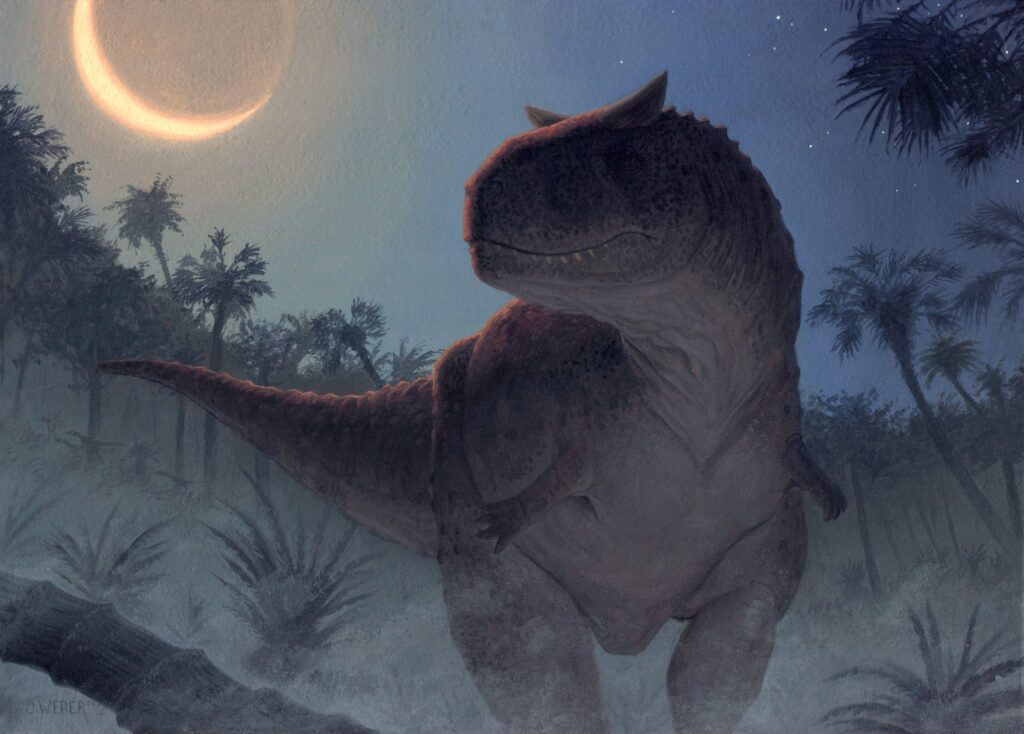
With its short, deep skull and a pair of horns above its eyes, Carnotaurus was a fearsome predator that likely relied on speed and agility to catch its prey.
Mapusaurus – The Pack Hunter
Like its cousin Giganotosaurus, Mapusaurus was a giant carnivore from South America. However, what sets Mapusaurus apart is evidence suggesting that it may have been a pack hunter.
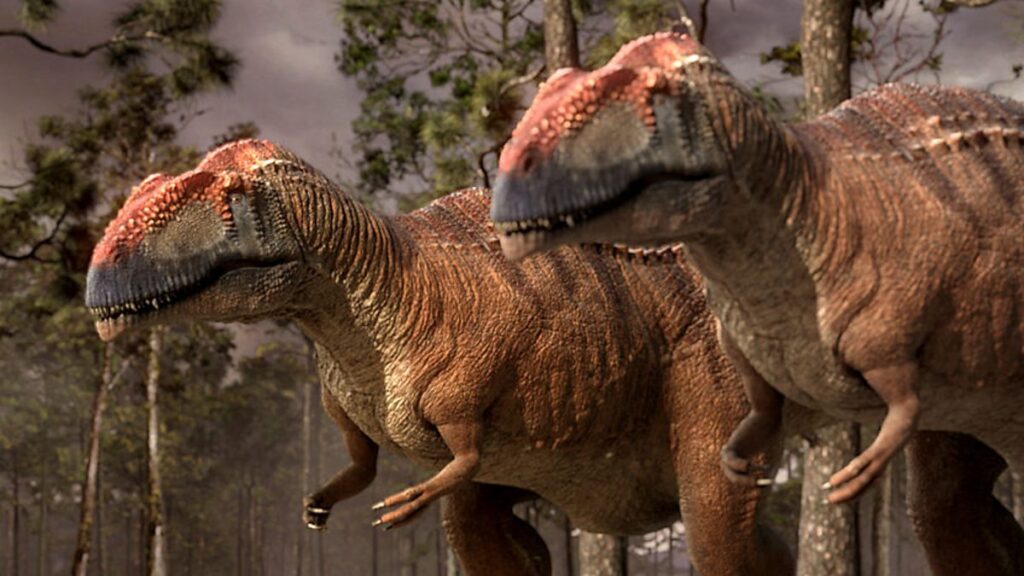
This means that several individuals may have worked together to take down larger prey, similar to modern-day wolves. This social behavior would have allowed Mapusaurus to target even larger dinosaurs, making it a formidable competitor in the ancient food chain.
Competing with the King – Spinosaurus vs. Tyrannosaurus rex
One of the most intriguing aspects of Spinosaurus’ legacy lies in its potential encounter with another titan of the dinosaur world – Tyrannosaurus rex. Both of these behemoths lived during the Late Cretaceous period, but their geographic distributions suggest they might not have encountered each other directly.

Nevertheless, the comparison between Spinosaurus and Tyrannosaurus rex has fueled a long-standing debate among paleontologists and dinosaur enthusiasts.
While Tyrannosaurus rex is undoubtedly one of the most iconic and ferocious carnivores, Spinosaurus’ larger size and unique adaptations make it a strong contender for the title of the largest carnivorous dinosaur.
Extinction and Legacy
As the Mesozoic Era drew to a close, so too did the reign of the dinosaurs. A catastrophic event, most likely an asteroid impact, triggered the Cretaceous-Paleogene extinction event, wiping out nearly three-quarters of all species on Earth, including the dinosaurs.
Despite meeting their end over 66 million years ago, the legacy of dinosaurs like Spinosaurus lives on in the form of fossils, scientific research, and popular culture.
The discovery of Spinosaurus brought new insights into the diversity and complexity of life during the Mesozoic Era, leaving an indelible mark on the field of paleontology.
Modern Understanding and Research
Advancements in scientific techniques have allowed paleontologists to gain a more accurate understanding of Spinosaurus and its behavior.
The use of cutting-edge technologies, such as CT scans and 3D modeling, has enabled scientists to reconstruct the appearance of this prehistoric giant with remarkable detail.
The Role of Dinosaurs in Popular Culture
From the pages of scientific journals to the silver screen, dinosaurs have left an indelible imprint on popular culture. The mere mention of these ancient reptiles evokes a sense of wonder and curiosity, captivating the minds of people of all ages.
Spinosaurus, with its imposing sail and fearsome presence, has become an iconic figure in popular culture.
It has made memorable appearances in various movies, television shows, and documentaries, further cementing its place in the hearts of dinosaur enthusiasts worldwide.
The Fascination with Dinosaurs
Why do dinosaurs continue to captivate our imagination and spark our curiosity? The allure of dinosaurs lies in their incredible diversity, ancient history, and their awe-inspiring size.
From the towering long-necked sauropods to the swift and agile raptors, dinosaurs represented a world of wonder and intrigue.
Conclusion
In conclusion, Spinosaurus stands as a testament to the grandeur and diversity of the prehistoric world. As the largest carnivorous dinosaur, it reigned as a formidable predator, adapting to both land and water with its impressive sail and elongated snout.

While its encounters with Tyrannosaurus rex remain speculative, there is no doubt that Spinosaurus was a true titan of the dinosaur kingdom.
Despite the passage of millions of years, the allure of Spinosaurus endures, captivating us with its mystique and sheer magnitude.
As we continue to unearth the secrets of the past, Spinosaurus remains an integral part of the ongoing story of life on Earth, a testament to the ever-evolving tapestry of our planet’s history.
FAQs
- What was the diet of Spinosaurus?
Spinosaurus primarily consumed fish and other aquatic prey, making it an adept swimmer and hunter in water. - Did Spinosaurus live in water?
Yes, Spinosaurus is believed to have spent a significant amount of time in water, where it hunted for fish and other aquatic animals. - How big was Spinosaurus’ sail?
Spinosaurus’ sail could reach impressive heights of up to 6 feet or more, though its exact purpose remains debated. - What were Spinosaurus’ closest relatives?
Spinosaurus belongs to the family Spinosauridae, which includes other spinosaurids like Suchomimus and Baryonyx. - Is Spinosaurus still the largest carnivorous dinosaur?
As of our current understanding, Spinosaurus retains its title as the largest known carnivorous dinosaur, surpassing even the mighty Tyrannosaurus rex. However, ongoing research may lead to new discoveries in the future, reshaping our knowledge of these ancient giants.
